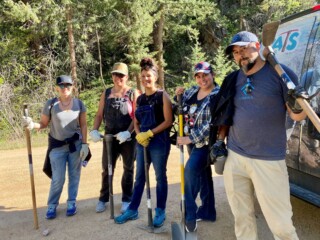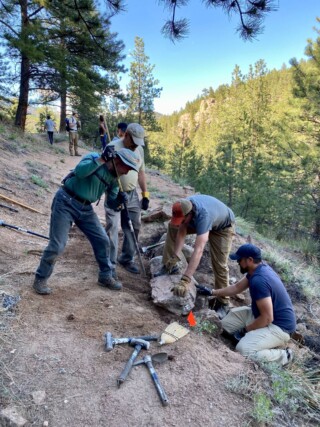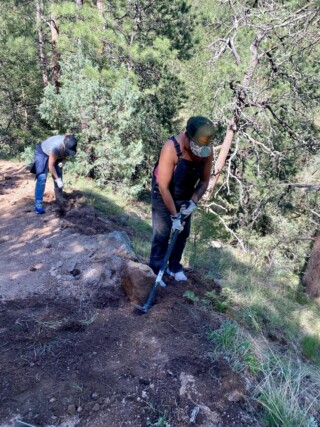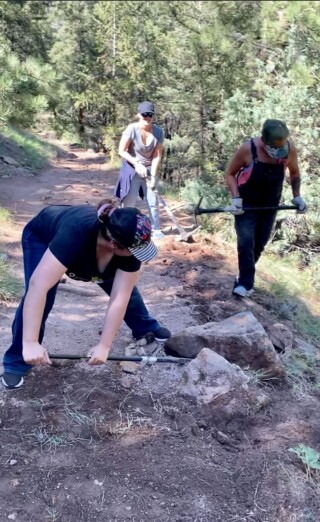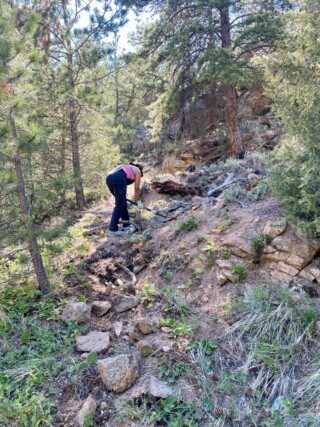A Culture of Service: Part Two
by Jon Fukuda
This is part two of our 2022 culture of service series. This post covers the first of our two community service projects where we volunteered to dig into our value of stewardship.
Read part 1 if you missed the background on our culture and value work.
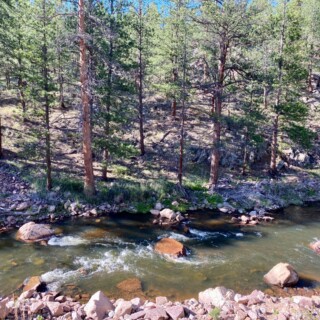
Sleepy Lion Trail Restoration
Button Rock Preserve, Longmont, CO
On May 26th, 2022, our team worked with Longmont POST (Parks Open Space Trails) Volunteers, and the CATS (Colorado Addicted Trailbuilders Society) on the Sleepy Lion Trail restoration project at Button Rock. Restoring this trail is an ongoing project for which our team contributed a day’s worth of work. Running, hiking, and biking Colorado trails are one of the most popular activities around the foothills all the way up into the Rockies. Over time, traffic, wind, weather, treefall, and the like, cause considerable wear and at times high-risk situations for people. In addition, certain patterns are more stable in times of snowmelt and run-off to prevent trail erosion.
As a rule, UX design looks out for common pathways in user workflows to better optimize their experience. This results in adding on/off ramps to/from workflows into related and tangential tasks or other contextually relevant data and interactions into key workflows to better support and reinforce a more frictionless task flow. Other times it’s a more extensive refactoring of the UX to support workflows that weren’t well considered in the original system concepts.
In the physical world, we use the term desire lines or paths that are scarred into the landscape over time and reveal a collective ideal path between two points. Sometimes these desired lines are ignored or even obstructed by plantings, posts, or blockades. Other times, the paths are acknowledged and paved over to better support pedestrian flow and protect the landscape from further damage.
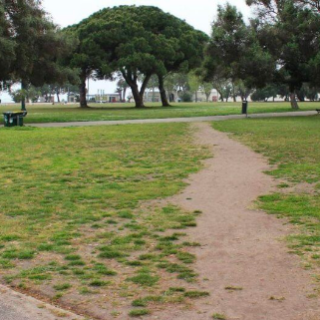
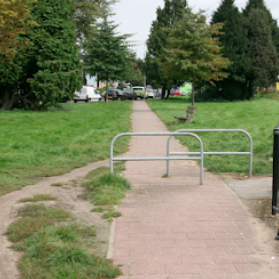
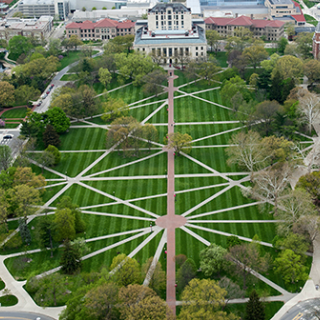
Design Considerations
While the same is true in trails, whether you’re blazing, maintaining, or restoring, there are other aspects at stake that need to be factored in; the environment, erosion, and safety. Trail restoration requires “whole systems” thinking, factoring in the needs of the hiker, but also how to maintain the safety and structural integrity of the trails against water (standing or runoff), erosion, and risk of rock or tree fall.
In this case, tell tail signs of going “off-trail” to create new desire pathways are strictly discouraged. This off-trail activity generally cuts across trail margins, opening the possibility for more destructive erosion.
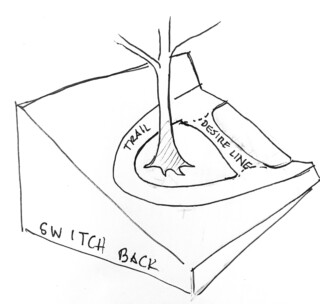
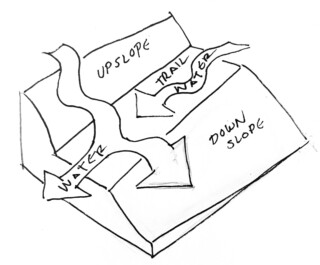
Erasing Desire
Our crew worked on a climbing turn of a switchback to address a number of issues. We worked with our fellow volunteers to blockade and fill in off-trail desire lines with rocks, fallen limbs, and some of the native ground cover, cactus, grasses, and pine needle mulch.
In some cases, the off-trail desire lines caused erosion on the margins of mankind the edges unstable and unsafe. We used large rocks, stones, gravel, and dirt to build up retaining walls and berms to prevent further erosion and to set clear boundaries for staying on the trail.

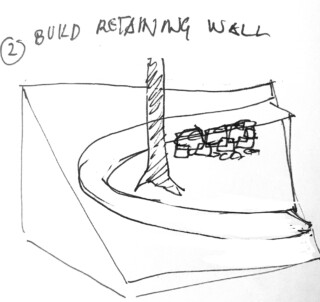
Addressing Nature
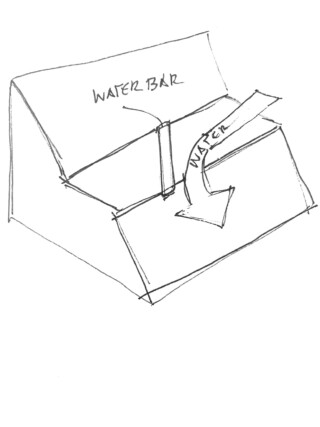
Finally, we looked for signs where either standing water or runoff put the integrity of the trail at risk and worked to maintain a 5% out-slope to support “sheet runoff,” which is ideal for mitigating trail erosion.
Closing Thoughts
Our key insight for the day was that while users(hikers) know what they want and may go off-trail to blaze new paths, there has been a far more careful set of guiding principles that drive trail design and implementation which actively work to maintain safety, structural integrity, and environmental sustainability. While the software is a bit of a different beast – there are business ecosystems that support workflows and pathways that have a similar set of guiding principles – if changes are to be accommodated, these changes need a whole systems impact awareness to design for more sustainable outcomes.
Even though this was back-breaking work, we leaned into our core value of stewardship. And as we later sat back and toasted over some drinks, we talked about insights we can fold back into our practice.
Read the full series
Our Culture of Service Part 1: an overview of our culture and values work.
Our Culture of Service Part 3: about our volunteer work restoring wetland ecology on Lake McInthosh
